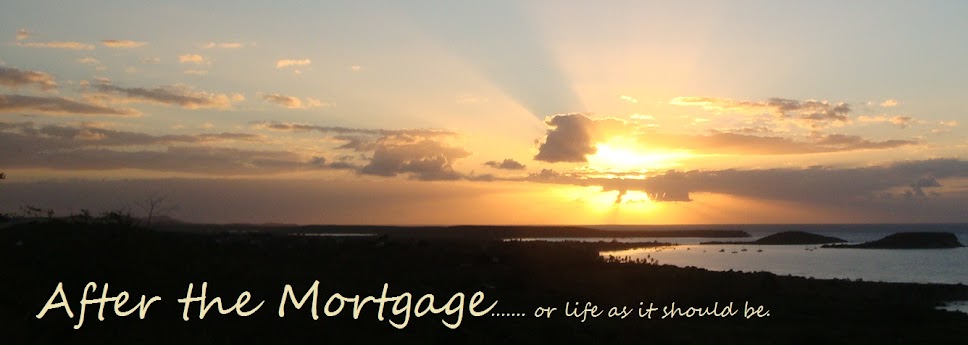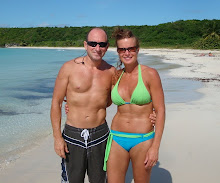Having concluded last night that Puerto Rico debt is "unpayable," and that his government could not continue to borrow money to address budget deficits while asking its residents, already struggling with high rates of poverty and crime, to shoulder most of the burden through tax increases and pension cuts, Padilla confirmed tonight that (from Bloomberg):
- *PUERTO RICO TO SEEK "NEGOTIATED MORATORIUM", 'YEARS' OF POSTPONEMENT IN DEBT PAYMENTS
Likening his state's situation to that of Detroit and New York City (though not Greece), Padilla concluded, the economic situation is "extremely difficult," which is odd because just a few years ago when they issued that bond - everything was awesome?
When will PR overtake Greece again?
Puerto Rico's Governor is speaking on national TV:
- *PUERTO RICO DEBT IS UNPAYABLE, GOVERNOR SAYS
- *PUERTO RICO DEBT LOAD WON'T LET ISLAND OVERCOME RECESSION: GOV.
- *PUERTO RICO GOV. SAYS HE DOESN'T AGREE W/ ALL OF KRUEGER REPORT
- *PUERTO RICO GOVERNOR SEEKS CREATION OF FISCAL BOARD
- *PUERTO RICO NEEDS COMPLETE RESTRUCTURING PLAN: GOVERNOR
- *PUERTO RICO TO SEEK `NEGOTIATED MORATORIUM' W/ BOND HOLDERS
- *PUERTO RICO MUST HAVE BETTER TERMS TO PAY DEBT: GOVERNOR
- *PUERTO RICO SEEKS ACCORD ON FISCAL REFORMS BY AUG. 30
And the punchline:
- *BONDHOLDERS SHARE RESPONSIBILITY FOR PUERTO RICO'S DEBT: GOV.
- *PUERTO RICO TO SEEK `NEGOTIATED MORATORIUM' W/ BOND HOLDERS
- *PUERTO RICO BONDHOLDERS MUST MAKE SACRIFICES TOO: GOVERNOR
- *PUERTO RICO TO SEEK `YEARS' OF POSTPONEMENT IN DEBT PAYMENTS
We suspect the 70 handle will quickly become a 50 handle or less...
As AP reports,
Puerto Rico's governor says he will create a financial team that will meet with bondholders and seek a moratorium on debt payments.Gov. Alejandro Garcia Padilla made the announcement Monday night after saying that the U.S. territory's $72 billion public debt is unpayable. He said he would seek a moratorium of several years but did not provide specifics.Garcia's comments come just hours after international economists released a gloomy report on Puerto Rico's economy.Legislators are still debating a $9.8 billion budget that calls for $674 million in cuts and sets aside $1.5 billion to help pay off the debt. The budget has to be approved by Tuesday.
What happens next is unclear: "Puerto Rico, as a commonwealth, does not have the option of bankruptcy. A default on its debts would most likely leave the island, its creditors and its residents in a legal and financial limbo that, like the debt crisis in Greece, could take years to sort out."
So without the "luxury" of default, what is PR to do? Why petition to be allowed to file Chapter 9 naturally: after all everyone is doing it.
In Washington, the García Padilla administration has been pushing for a bill that would allow the island’s public corporations, like its electrical power authority and water agency, to declare bankruptcy. Of Puerto Rico’s $72 billion in bonds, roughly $25 billion were issued by the public corporations.Some officials and advisers say Congress needs to go further and permit Puerto Rico’s central government to file for bankruptcy — or risk chaos.“There are way too many creditors and way too many kinds of debt,” Mr. Rhodes said in an interview. “They need Chapter 9 for the whole commonwealth.”
García Padilla said that his government could not continue to borrow money to address budget deficits while asking its residents, already struggling with high rates of poverty and crime, to shoulder most of the burden through tax increases and pension cuts. Where have we heard that before...
He said creditors must now “share the sacrifices” that he has imposed on the island’s residents.“If they don’t come to the table, it will be bad for them,” said Mr. García Padilla, who plans to speak about the fiscal crisis in a televised address to Puerto Rico residents on Monday evening. “What will happen is that our economy will get into a worse situation and we’ll have less money to pay them. They will be shooting themselves in the foot.”
And the punchline:
“My administration is doing everything not to default,” Mr. García Padilla said. “But we have to make the economy grow,” he added. “If not, we will be in a death spiral.”
And this one: any deal with hedge funds, who are desperate to inject more capital in PR so they can avoid writing down their bond exposure in case of a default, "would only postpone Puerto Rico’s inevitable reckoning. “It will kick the can,” Mr. García Padilla said. “I am not kicking the can.”
We wonder how long before Tsipras, who earlier was quoting FDR, steals this line too.
And speaking of Prexit,how long before Puerto Rico exits the Dollarzone... and will there be a Preferendum first or will the governor, in his can kick-less stampede, just make a unilateral decision to join Greece, Ukraine, Venezuela and countless other soon to be broke countries in the twilight zone of Keynesian sovereign failures?
* * *
But Puerto Rico is not Detroit... well actually it is... worse:
- *PUERTO RICO FACES SIMILIAR SITUATION AS DETROIT, NYC: GOVERNOR
Puerto Rico's debt is nearly half that of California for a population one-tenth the size... (via WSJ)
full story here









